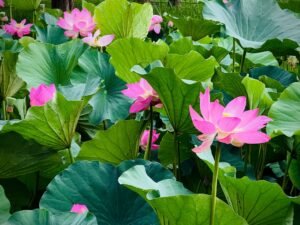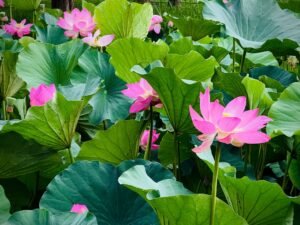

Norwegian for Healthcare Professionals: A Comprehensive Guide to Elderly Care Language
Table of Contents
Toggle1. Introduction
In the realm of healthcare, effective communication is paramount. For professionals working in Norway’s elderly care sector, mastering the Norwegian language is not just a skill—it’s a necessity. This comprehensive guide aims to equip healthcare workers with the linguistic tools needed to provide exceptional care to elderly patients in Norway.
As you embark on this journey of language acquisition, remember that personalized instruction can significantly accelerate your learning process. The NLS Norwegian Language School offers tailored private classes to help you master Norwegian for healthcare. You can find more information and register for these one-on-one sessions at https://nlsnorwegian.no/private-classes-1-to-1-learn-norwegian/
2. First Impressions: Greetings and Polite Phrases
2.1 Basic Greetings
When you first meet an elderly patient, it’s crucial to make a positive impression. Here are some essential greetings:
- “God morgen!” (Good morning!)
- “God dag!” (Good day/Hello!)
- “God kveld!” (Good evening!)
- “Hei!” (Hi! – more informal)
2.2 Introducing Yourself
As a healthcare professional, you’ll often need to introduce yourself:
- “Jeg heter [your name].” (My name is [your name].)
- “Jeg er sykepleieren din i dag.” (I’m your nurse today.)
- “Jeg er legen som skal undersøke deg.” (I’m the doctor who will examine you.)
2.3 Polite Inquiries
After greeting, it’s customary to inquire about the patient’s well-being:
- “Hvordan har du det i dag?” (How are you today?)
- “Hvordan føler du deg?” (How are you feeling?)
- “Har du sovet godt?” (Did you sleep well?)
2.4 Formal vs. Informal Address
In Norwegian, there’s a distinction between formal and informal address. With elderly patients, it’s often appropriate to start with the formal form:
- “Foretrekker De at jeg sier ‘De’ eller ‘du’?” (Do you prefer that I use the formal ‘De’ or the informal ‘du’?)
3. The Human Body: Anatomy and Physiology
3.1 Major Body Parts
Understanding anatomy terms is crucial for healthcare professionals:
- Hode (head)
- Nakke (neck)
- Skulder (shoulder)
- Arm (arm)
- Hånd (hand)
- Bryst (chest)
- Mage (stomach)
- Rygg (back)
- Ben (leg)
- Fot (foot)
3.2 Internal Organs
Knowing the Norwegian terms for internal organs is equally important:
- Hjerte (heart)
- Lunger (lungs)
- Lever (liver)
- Nyrer (kidneys)
- Milt (spleen)
- Bukspyttkjertel (pancreas)
- Galleblære (gallbladder)
3.3 Describing Pain and Discomfort
You’ll often need to ask patients about pain or discomfort:
- “Hvor har du vondt?” (Where does it hurt?)
- “Kan du peke på hvor smerten sitter?” (Can you point to where the pain is located?)
- “Er smerten skarp eller dump?” (Is the pain sharp or dull?)
- “På en skala fra 1 til 10, hvor vondt har du?” (On a scale from 1 to 10, how much does it hurt?)
4. Daily Routines: Activities of Daily Living (ADL)
4.1 Basic ADL Terms
In elderly care, Activities of Daily Living (ADL) are a crucial concept:
- Påkledning (dressing)
- Personlig hygiene (personal hygiene)
- Spising (eating)
- Toalettbesøk (toileting)
- Forflytning (mobility)
4.2 Assisting with ADLs
You might need to offer assistance with these activities:
- “Trenger du hjelp til å kle på deg?” (Do you need help getting dressed?)
- “La meg hjelpe deg med å børste tennene.” (Let me help you brush your teeth.)
- “Skal vi gå en liten tur i gangen?” (Shall we take a short walk in the hallway?)
4.3 Encouraging Independence
Promoting independence is important in elderly care:
- “Prøv å gjøre så mye som mulig selv.” (Try to do as much as you can by yourself.)
- “Si ifra hvis du trenger hjelp.” (Let me know if you need help.)
5. Nutrition and Hydration: The Language of Food and Drink
5.1 Meal Times
Understanding meal-related vocabulary is essential:
- Frokost (breakfast)
- Lunsj (lunch)
- Middag (dinner)
- Kveldsmat (evening snack)
5.2 Types of Food
Familiarize yourself with common food terms:
- Brød (bread)
- Melk (milk)
- Egg (eggs)
- Kjøtt (meat)
- Fisk (fish)
- Grønnsaker (vegetables)
- Frukt (fruit)
5.3 Dietary Restrictions
You may need to discuss dietary restrictions:
- “Er du allergisk mot noe?” (Are you allergic to anything?)
- “Har du noen diettbegrensninger?” (Do you have any dietary restrictions?)
- “Er du vegetarianer?” (Are you a vegetarian?)
5.4 Hydration
Encouraging proper hydration is crucial:
- “Husk å drikke nok vann.” (Remember to drink enough water.)
- “Vil du ha litt juice?” (Would you like some juice?)
- “Det er viktig å holde seg hydrert.” (It’s important to stay hydrated.)
6. Medications and Treatment: Essential Healthcare Vocabulary
6.1 Types of Medication
Learn the Norwegian terms for different types of medication:
- Tabletter (tablets)
- Kapsler (capsules)
- Mikstur (mixture/syrup)
- Injeksjon (injection)
- Salve (ointment)
- Plaster (patch)
6.2 Administering Medication
You’ll need to communicate about medication administration:
- “Her er medisinene dine.” (Here are your medications.)
- “Ta denne tabletten med et glass vann.” (Take this tablet with a glass of water.)
- “Denne medisinen skal tas før måltider.” (This medication should be taken before meals.)
6.3 Side Effects and Allergies
Discussing potential side effects and allergies is crucial:
- “Har du opplevd noen bivirkninger?” (Have you experienced any side effects?)
- “Si ifra hvis du får utslett eller kløe.” (Let me know if you develop a rash or itching.)
7. Emotional Well-being: Addressing Mental Health
7.1 Discussing Emotions
Being able to discuss emotional states is important:
- “Hvordan føler du deg i dag?” (How are you feeling today?)
- “Virker du litt nedfor.” (You seem a bit down.)
- “Er det noe du vil snakke om?” (Is there something you want to talk about?)
7.2 Mental Health Terminology
Familiarize yourself with mental health terms:
- Depresjon (depression)
- Angst (anxiety)
- Ensomhet (loneliness)
- Forvirring (confusion)
- Hukommelsestap (memory loss)
7.3 Providing Emotional Support
Learn phrases to offer emotional support:
- “Jeg er her for å lytte.” (I’m here to listen.)
- “Det er normalt å føle seg slik.” (It’s normal to feel this way.)
- “La oss finne noe hyggelig å gjøre sammen.” (Let’s find something nice to do together.)
8. Emergency Situations: Quick Response Vocabulary
8.1 Calling for Help
In emergencies, you need to communicate quickly and clearly:
- “Jeg trenger hjelp her!” (I need help here!)
- “Ring etter lege!” (Call for a doctor!)
- “Vi må ringe ambulanse.” (We need to call an ambulance.)
8.2 Describing Emergency Situations
Learn to describe common emergency situations:
- “Pasienten har falt.” (The patient has fallen.)
- “Han/hun puster ikke.” (He/she is not breathing.)
- “Det er en allergisk reaksjon.” (It’s an allergic reaction.)
8.3 Emergency Equipment
Familiarize yourself with terms for emergency equipment:
- Hjertestarter (defibrillator)
- Oksygenmaske (oxygen mask)
- Båre (stretcher)
9. Documentation: The Language of Record-Keeping
9.1 Medical Records
Understanding documentation terminology is crucial:
- Journal (medical record)
- Rapport (report)
- Observasjon (observation)
- Pleieplan (care plan)
9.2 Writing Reports
Learn phrases for writing medical reports:
- “Pasienten klaget over smerter i ryggen.” (The patient complained of back pain.)
- “Blodtrykket er normalt.” (Blood pressure is normal.)
- “Medisiner ble gitt som foreskrevet.” (Medications were given as prescribed.)
9.3 Legal and Ethical Terminology
Familiarize yourself with legal and ethical terms:
- Taushetsplikt (confidentiality)
- Samtykkeerklæring (consent form)
- Pasientrettigheter (patient rights)
10. Cultural Sensitivity in Elderly Care
10.1 Respecting Norwegian Customs
Understanding Norwegian customs can improve patient relationships:
- “Vil du ha kaffe?” (Would you like coffee?) – Offering coffee is a common social gesture in Norway.
- “Skal vi se på Dagsrevyen sammen?” (Shall we watch the evening news together?) – Many older Norwegians have a routine of watching the evening news.
10.2 Holidays and Celebrations
Be aware of important Norwegian holidays:
- “God jul!” (Merry Christmas!)
- “Gratulerer med dagen!” (Happy Constitution Day! – said on May 17th)
10.3 Norwegian Elder Care Philosophy
Understand key concepts in Norwegian elder care:
- Verdighet (dignity)
- Selvbestemmelse (self-determination)
- Livskvalitet (quality of life)
11. Technology in Healthcare: Digital Terms
11.1 Basic Computer Terms
As healthcare becomes more digital, learn these tech terms:
- Datamaskin (computer)
- Skjerm (screen)
- Tastatur (keyboard)
- Passord (password)
11.2 Electronic Health Records
Familiarize yourself with terms related to electronic health records:
- Elektronisk pasientjournal (electronic health record)
- Logg inn (log in)
- Oppdater (update)
- Lagre (save)
11.3 Telemedicine
Learn vocabulary related to remote healthcare:
- Videokonsultasjon (video consultation)
- Fjernoppfølging (remote monitoring)
- E-resept (e-prescription)
12. Professional Development: Continuing Education Terms
12.1 Training and Courses
Learn vocabulary related to professional development:
- Kurs (course)
- Etterutdanning (continuing education)
- Sertifisering (certification)
- Faglig oppdatering (professional update)
12.2 Discussing Career Goals
Be prepared to discuss your career aspirations:
- “Jeg ønsker å spesialisere meg innen geriatri.” (I want to specialize in geriatrics.)
- “Kan du anbefale noen kurs for meg?” (Can you recommend any courses for me?)
12.3 Networking and Collaboration
Learn terms related to professional networking:
- Fagkonferanse (professional conference)
- Tverrfaglig samarbeid (interdisciplinary collaboration)
- Mentor (mentor)
- Kollegaveiledning (peer guidance)
13. Specialized Care: Dementia and Cognitive Impairment
13.1 Types of Dementia
Familiarize yourself with different types of dementia:
- Alzheimers sykdom (Alzheimer’s disease)
- Vaskulær demens (vascular dementia)
- Lewy-legeme-demens (Lewy body dementia)
13.2 Cognitive Assessment
Learn terms related to cognitive assessment:
- Hukommelsestest (memory test)
- Orienteringsevne (orientation ability)
- Kognitiv svikt (cognitive impairment)
13.3 Communication Strategies
Understand phrases for communicating with dementia patients:
- “Ta deg god tid.” (Take your time.)
- “La oss gå gjennom dette sammen.” (Let’s go through this together.)
- “Kan du fortelle meg mer om det?” (Can you tell me more about that?)
14. Physical Therapy and Rehabilitation
14.1 Exercise and Movement
Learn terms related to physical activity:
- Styrketrening (strength training)
- Balanseøvelser (balance exercises)
- Gangtrening (gait training)
14.2 Mobility Aids
Familiarize yourself with terms for mobility aids:
- Rullator (walker)
- Rullestol (wheelchair)
- Stokk (cane)
14.3 Pain Management
Understand vocabulary related to pain management:
- Smertelindring (pain relief)
- Varmebehandling (heat therapy)
- Massasje (massage)
15. End-of-Life Care
15.1 Palliative Care Terms
Learn vocabulary related to palliative care:
- Lindrende behandling (palliative treatment)
- Livets slutt (end of life)
- Smertebehandling (pain management)
15.2 Discussing End-of-Life Care
Understand phrases for discussing end-of-life care:
- “Har du noen ønsker for din fremtidige behandling?” (Do you have any wishes for your future treatment?)
- “La oss snakke om dine prioriteringer.” (Let’s talk about your priorities.)
15.3 Grief and Bereavement
Learn terms related to grief and bereavement:
- Sorg (grief)
- Sorgprosess (grieving process)
- Etterlatte (bereaved)
16. Norwegian Healthcare System
16.1 Healthcare Structure
Understand the structure of the Norwegian healthcare system:
- Primærhelsetjeneste (primary healthcare service)
- Spesialisthelsetjeneste (specialist healthcare service)
- Kommunehelsetjeneste (municipal health service)
16.2 Health Insurance
Learn about the Norwegian health insurance system:
- Folketrygden (National Insurance Scheme)
- Egenandel (deductible/co-payment)
- Frikort (exemption card)
16.3 Patient Rights
Familiarize yourself with patient rights in Norway:
- Rett til nødvendig helsehjelp (right to necessary healthcare)
- Rett til medvirkning (right to participation)
- Rett til informasjon (right to information)
17. Infection Control and Hygiene
17.1 Basic Hygiene Practices
Learn terms related to basic hygiene:
- Håndhygiene (hand hygiene)
- Desinfeksjon (disinfection)
- Sterilisering (sterilization)
17.2 Personal Protective Equipment
Familiarize yourself with terms for protective equipment:
- Munnbind (face mask)
- Hansker (gloves)
- Smittefrakk (isolation gown)
17.3 Infection Types
Understand different types of infections:
- Luftveisinfeksjon (respiratory infection)
- Urinveisinfeksjon (urinary tract infection)
- Sårinfeksjon (wound infection)
17.4 Outbreak Management
Learn vocabulary related to managing disease outbreaks:
- Smittesporing (contact tracing)
- Isolasjon (isolation)
- Karantene (quarantine)
- Smitteverntiltak (infection control measures)
18. Nutrition and Dietary Management
18.1 Special Diets
Familiarize yourself with different types of special diets:
- Diabeteskost (diabetic diet)
- Lavkarbodiett (low-carb diet)
- Glutenfri kost (gluten-free diet)
- Laktosefri kost (lactose-free diet)
18.2 Nutritional Supplements
Learn terms for nutritional supplements:
- Vitamintilskudd (vitamin supplement)
- Proteindrikk (protein drink)
- Næringsdrikk (nutritional drink)
18.3 Feeding Assistance
Understand phrases related to feeding assistance:
- “Vil du ha hjelp til å spise?” (Would you like help eating?)
- “La oss ta en bit av gangen.” (Let’s take one bite at a time.)
- “Ikke stress, vi har god tid.” (Don’t stress, we have plenty of time.)
19. Wound Care and Skin Health
19.1 Types of Wounds
Learn terms for different types of wounds:
- Liggesår (bedsore/pressure ulcer)
- Operasjonssår (surgical wound)
- Brannsår (burn)
19.2 Wound Care Procedures
Familiarize yourself with wound care procedures:
- Sårstell (wound care)
- Bandasjeskift (dressing change)
- Sårrengjøring (wound cleaning)
19.3 Skin Conditions
Understand common skin conditions in the elderly:
- Tørr hud (dry skin)
- Kløe (itching)
- Utslett (rash)
20. Pain Management and Comfort Care
20.1 Types of Pain
Learn to describe different types of pain:
- Akutt smerte (acute pain)
- Kronisk smerte (chronic pain)
- Gjennombruddssmerter (breakthrough pain)
20.2 Pain Assessment
Understand terms used in pain assessment:
- Smerteskala (pain scale)
- Smerteintensitet (pain intensity)
- Smertekartlegging (pain mapping)
20.3 Non-Pharmacological Pain Management
Learn about non-drug pain management techniques:
- Avledning (distraction)
- Avslapningsteknikker (relaxation techniques)
- Kuldeterapi (cold therapy)
- Varmeterapi (heat therapy)
21. Fall Prevention and Safety
21.1 Risk Factors
Familiarize yourself with terms related to fall risk factors:
- Balanseproblemer (balance problems)
- Svimmelhet (dizziness)
- Muskelsvakhet (muscle weakness)
21.2 Safety Measures
Learn vocabulary for safety measures:
- Sklisikre matter (non-slip mats)
- Støttehåndtak (grab bars)
- Sengehest (bed rails)
21.3 Fall Assessment
Understand terms used in fall risk assessment:
- Gangtest (walking test)
- Balansetest (balance test)
- Fallanamnese (fall history)
22. Communication with Family Members
22.1 Discussing Care Plans
Learn phrases for discussing care plans with family members:
- “La oss gå gjennom pleieplanene sammen.” (Let’s go through the care plans together.)
- “Har dere noen spørsmål eller bekymringer?” (Do you have any questions or concerns?)
22.2 Providing Updates
Familiarize yourself with phrases for providing updates:
- “Det har vært en positiv utvikling denne uken.” (There has been a positive development this week.)
- “Vi har observert noen endringer i tilstanden.” (We’ve observed some changes in the condition.)
22.3 Discussing Sensitive Topics
Learn how to approach sensitive topics:
- “Kan vi snakke om fremtidige behandlingsalternativer?” (Can we talk about future treatment options?)
- “Det er viktig å diskutere ønsker for livets slutt.” (It’s important to discuss end-of-life wishes.)
23. Rehabilitation and Restorative Care
23.1 Rehabilitation Goals
Understand terms related to rehabilitation goals:
- Funksjonsopprettholdelse (maintaining function)
- Funksjonsforbedring (improving function)
- Tilbakeføring til hverdagslivet (return to daily life)
23.2 Therapy Types
Learn about different types of therapy:
- Fysioterapi (physiotherapy)
- Ergoterapi (occupational therapy)
- Logopedi (speech therapy)
23.3 Progress Monitoring
Familiarize yourself with terms used in monitoring progress:
- Fremgangsrapport (progress report)
- Måloppnåelse (goal achievement)
- Funksjonsvurdering (functional assessment)
24. Cultural Competence in Elderly Care
24.1 Diverse Backgrounds
Learn phrases to discuss diverse backgrounds:
- “Kan du fortelle meg om dine kulturelle tradisjoner?” (Can you tell me about your cultural traditions?)
- “Er det noe spesielt vi bør ta hensyn til i pleien din?” (Is there anything specific we should consider in your care?)
24.2 Religious Practices
Understand terms related to religious practices:
- Bønn (prayer)
- Faste (fasting)
- Religiøse høytider (religious holidays)
24.3 Dietary Preferences
Learn to discuss cultural dietary preferences:
- “Har du noen spesielle matpreferanser basert på din kultur?” (Do you have any specific food preferences based on your culture?)
- “Er det noen matvarer du ikke spiser av religiøse årsaker?” (Are there any foods you don’t eat for religious reasons?)
Conclusion
This comprehensive guide to Norwegian language for healthcare professionals in elderly care settings provides a solid foundation for effective communication. Remember, language learning is an ongoing process, and the best way to improve is through consistent practice and real-world application.
To further enhance your Norwegian language skills in a healthcare context, consider taking advantage of personalized instruction. The NLS Norwegian Language School offers private, one-on-one classes tailored specifically for healthcare professionals. These classes can help you master pronunciation, expand your medical vocabulary, and practice real-life scenarios you’ll encounter in your work.
To learn more about these private classes and to register, visit https://nlsnorwegian.no/private-classes-1-to-1-learn-norwegian/
By investing time in learning Norwegian, you’re not only advancing your career but also significantly improving the quality of care you can provide to elderly patients in Norway. Your efforts to communicate effectively in Norwegian will be greatly appreciated by your patients, their families, and your colleagues.
Continue to practice, seek out opportunities to use Norwegian in your daily work, and don’t be afraid to ask for help or clarification when needed. With dedication and persistence, you’ll find yourself becoming more confident and proficient in using Norwegian in healthcare settings, ultimately leading to better patient outcomes and a more rewarding professional experience.
If you want to learn Norwegian, you can register for classes here. We look forward to hearing from you and helping you become fluent in Norwegian.





